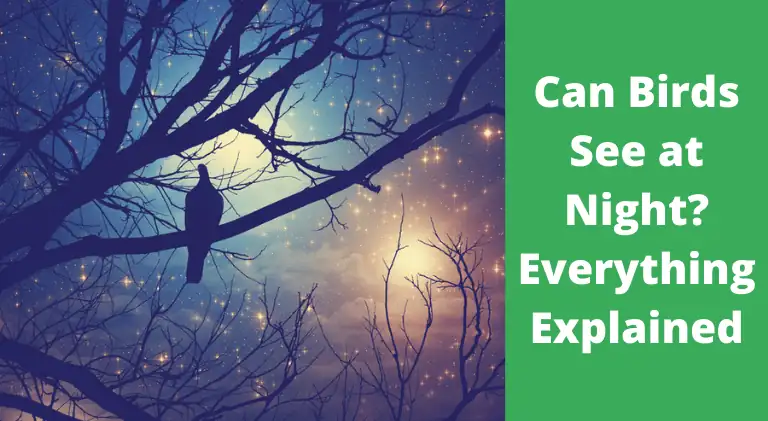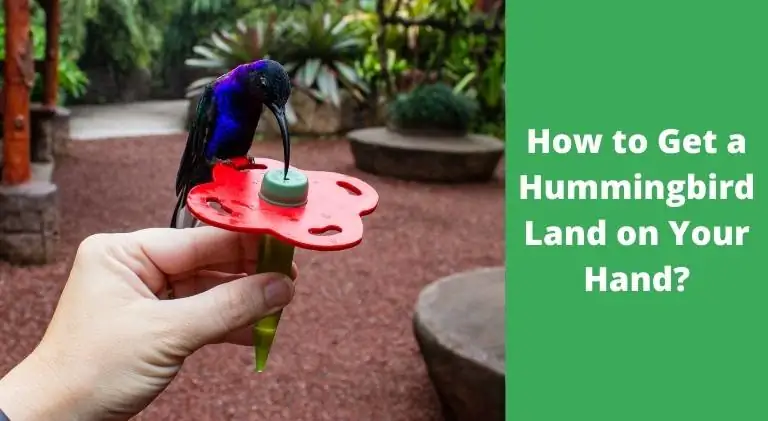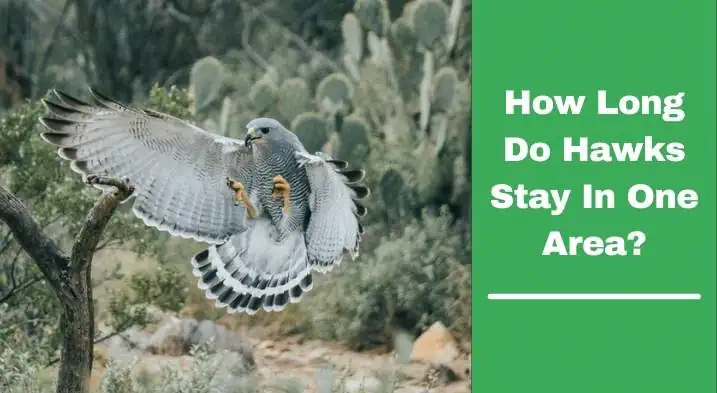Can Birds Fly Straight Up – (Vertical Takeoff)
You may have seen VTOL or STOVL aircraft or maybe heard about them. But the question is can birds fly straight up from the ground in a vertical direction?
Yes, some birds such as hummingbirds, Ducks, and pigeons can fly straight up from the ground in a vertical direction. However, not all species of birds of capable of flying straight vertically from the ground.
Why do some birds fly directly in a vertical direction while others can’t? well to learn this along with the types of birds that can fly vertically you need to scroll down.
In this article, I have explained all the secrets due to which some birds are capable of vertical takeoff and what makes them able to do so.
If are interested to learn the secret of vertical flight in birds then keep on reading.
Can Birds Fly Straight Up From the Ground?
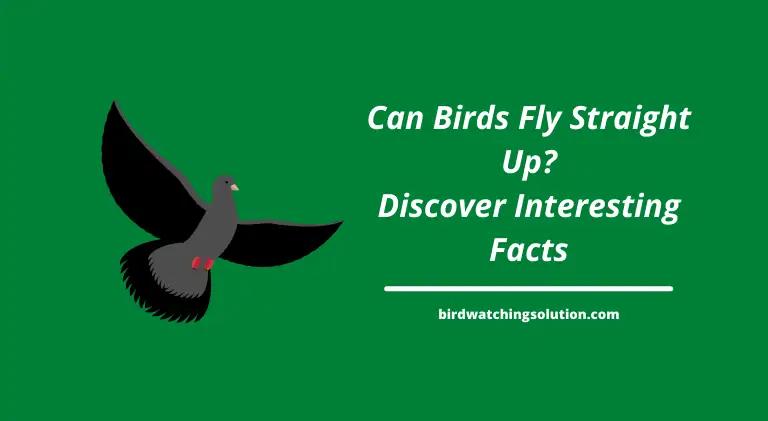
Yes, some birds can fly vertically from the ground in a straight direction. A duck can make a vertical takeoff by flapping its wings. It does this when it takes off in the air, and also when it is in the water.
Also on land, it also flies vertically upwards for about 100 feet due to which it’s known as the “Flying V” duck.
Why Birds Can Fly Vertically – Types Of Birds That Can Do It
There are different types of birds that can fly vertically, some examples are as follows
- Hummingbirds
- Ducks
- Pigeons
Hummingbirds
Hummingbirds can fly vertically while hovering in the air. This is due to its highly modified and lightweight skeletal structure, wing shape and rapid wing beat frequency.
They even do this for much longer than just a few seconds and also they can propel themselves into the vertical direction with ease because of their amazing physical structures that make it possible.
Pigeons
There are other birds such as Pigeons which can fly vertically for a few meters only. They do this by flapping their wings rapidly in an upward direction while jumping up from the ground. When they get closer to the sky, they start flapping their wings at a slower rate and then they start to glide.
They also make use of updrafts, thermals, and other natural currents to fly upwards in a vertical direction. This is another example of birds that can fly vertically from the ground.
Ducks
Another example of a bird that can take off vertically from the water or land is ducks. They can fly vertically from a water body by using a fast upward wing thrust while the downward motion of their wings provides lift.
All these species of bird have one thing in common, they use their tail feathers to keep themselves stable during vertical takeoff and landing.
Birds using tail feathers for stability is very important because with the help of it they can produce more lift during vertical takeoff and landing.
What Makes Birds Fly Vertically – Secret Of Vertical Takeoff In Birds
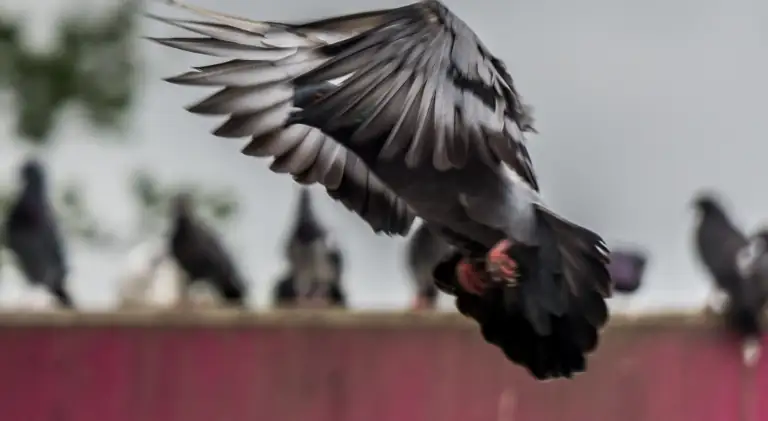
So, why some birds are capable of flying vertically while others are not? What is the secret behind it? Let’s find out.
The main secret is that some types of birds have tail feather which is wide or long, these types of birds are capable of producing more lift during the takeoff and landing process. That’s how they fly vertically with ease.
However, all species of birds can’t produce more lift using their tail feathers because some of them have short or narrow tail.
So, the bottom line is that wide or long Tail feathers help in providing more stability during the takeoff and landing process which is the key to vertical flight.
Some other things that make some birds capable of flying vertically are strong wing muscles, more mass in their chest area, and a flexible backbone.
The most important thing is that if a bird has a short tail it will never be able to fly straight vertically from the ground because it won’t have enough amount of lift.
Why Can’t all Birds Fly Straight Up?
The short answer to this question is that all birds cannot fly vertically from the ground because it requires a lot of energy and strength. If a bird doesn’t have strong wings or enough mass in its chest area then it will never be able to fly vertically.
Also, lack of tail feathers causes less stability during takeoff and landing which can lead to a fatal crash.
So, it’s not only the matter of being capable of producing more lift but there are other important factors as well that decide whether a bird is capable of flying vertically or not.
Different Flying Styles of Birds That You should Know
Apart from the vertical flying style, there are some other flying patterns that can be found in birds. Let’s take a look at some of them.
1. Using the Force of the Wind
Birds such as swifts, eagles, and vultures use the force of the wind to fly with ease. They can do this because they have long wings and a triangular-shaped body which provides them more lift when compared with other birds. Also, birds like these have a high mass in their chest area which helps them in gaining momentum and speed which is very important for soaring flight.
2. Circling The Sky
Birds like ospreys, falcons, and hawks use circling the sky to fly with ease. With the help of updrafts and strong wing muscles, these types of birds can fly by using their air currents to get energy. They can use updrafts because they have more mass in their chest area which helps them.
3. Gliding With Ease
The majority of birds like geese, ducks, cranes and albatrosses fly by gliding with the help of air currents or thermals. They can do this because they have long wings and flexible bodies.
4. Jumping From High Perches
Some birds like kingfishers use jumping from high perches to fly. They can do this because they have a lightweight body and a strong, flexible backbone which helps them in flying.
4. Soaring The Sky And Getting Energy From It
Small birds like eagles, hawks, and falcons can soar the sky because they have powerful wing muscles and long wings which provide them enough momentum to fly rapidly. So they use updrafts or thermals to get energy from that air currents in order to stay in the air.
5. Leaping on Legs
Birds like hens, large waders, and cranes can fly by leaping on their legs. This is possible because they have long legs which help them in providing enough momentum for taking off the ground.
6. Gliding From The Water Surface
Waterbirds like ducks, geese, or swans glide from the water surface to fly with ease. They can do this because they have a lightweight body that helps them in gaining momentum and speed which are the key aspects of gliding flight.
7. Riding Air Currents And Getting Energy From Them
Birds like buzzards, vultures, kites, owls, eagles, falcons, pigeons, or parrots can use updrafts to get energy. As I mentioned above, they have a lightweight body that enables them to fly with the help of air currents.
What Are the Factors That Help a Bird Fly Into the Air?

For centuries men have been wondering how do birds fly and what are factors helping them in flying. Here we will discuss some of those factors:
Weight
Weight is one of the most important factors that determine whether a bird can take off or not. Heavyweight does not allow a bird to fly and lightweight birds can actually go up very quickly. Also, if a bird suddenly becomes lightweight then it will not be able to fly.
Wing Span
Wing span is another important factor that determines whether a bird can actually take off or not.
Bigger the wing span of a bird, the more power it has and the more momentum it can gain when in flight.
Also, when considering certain species like albatross, there is one special feature that enables the bird to fly with ease.
That feature is called pectoral muscles. Different birds have different sized pecs for flying purposes and they use them according to their sizes.
Body Shape
The body shape of a bird also determines whether it can actually fly or not because it provides certain advantages like getting momentum easily or getting chances to use the air currents.
So birds like ospreys, falcons, and eagles have triangular-shaped bodies. It provides them more lift when compared with other birds because of the structure of their hips.
Also, such kind of body shape helps in soaring as well as gliding flight.
Physical Features
Apart from the above factors, the physical features of the bird is also important when considering the question of how do birds fly. For example, if a bird-like crane has long legs then it will be able to fly easily and quickly because its legs help it in gaining momentum for flying into the air.
So we can say that a combination of the above factors determines whether a bird can take off or not. Below are all of the physical features affects the flight of the birds.
- Feathers with a smooth and lightweight texture to decrease the impact of weight and thrust.
- To dissipate the power of thrust, there is a large breastbone.
- Hollow bones minimize the weight of the bird
- Thin, tiny cross pieces in the bones gives them extra strength
- A solid skeleton provides strong attachments for more powerful muscles
- A beak instead of heavy teeth to reduce the overall weight
- Wings to help generate the force of lift
- Most birds have perfect airfoil which makes the birds lighter by decreasing drag
- Enables them to make quick movements
- Strong muscles-used for soaring and gliding flight.
- Some muscles are airfoils that move against the surrounding wind current which propels the bird forward.
Why do Birds Flap their Wings During the Flight?

We all know that birds flap their wings during the flight. But we should also remember that the amount of flapping and speed at which they flap can make a difference in their flight.
Generally, larger and heavier birds like eagles flap less than small fowls because it doesn’t require so much force to lift them with air currents.
Of course, there are different purposes for flapping wings other than gaining momentum.
One of the major purposes is to reduce speed from down wind and save power when flying against the wind.
Also, it helps in changing direction or moving up and down while gliding. For example, a bird can move up by using its forward flapping momentum. Then it can glide to the desired height by pulling its wings back and letting them go in their original position.
So when you see a bird gliding, don’t think that it is taking a rest. It might be flapping its wings higher up to attract air currents or make some plans for manipulation of speed and direction before making the final dive.
So if you think about how do birds fly, then now you know all of the physical factors that play an important role in enabling them to take off and why they flap their wings during the flight.
Final Words
Can Birds Fly Straight Up? Yes, there are some birds such as the hummingbird, ducks, and pigeons that can fly straight up in the sky. Also, doves have an amazing capability to fly straight upwards in a zigzag fashion.
I hope you’ve enjoyed this article. If so, please do remember to share it with your friends and family.
Also if you want to add something to make this article more helpful for my readers please feel free to share your thoughts
Thank you and happy birdwatching!

